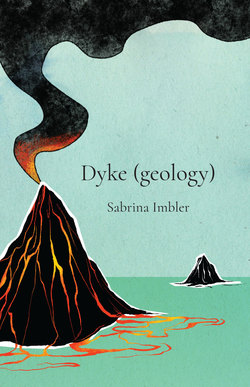Читать книгу Dyke (geology) - Sabrina Imbler - Страница 4
1.
ОглавлениеIt all happened that one summer 780,000 years ago—the June when humans first learned how to make fire, the July when the first woman left Africa, and the August we think we built the Sphinx. That summer a volcano named Kohala saw the poles switch from North to South and South to North. They sat for so long on opposite ends of the Earth and then decided, suddenly and arbitrarily, to change places, walking halfway across the world. Kohala would learn that Earth has always alternated between these periods of normal polarity and reverse polarity, where the magnetic field flips into the opposite orientation, where difference no longer attracts. And suddenly the volcano realized she hungered for the same.
The traditional theory of attraction in the field of electromagnetism operates under the assumption of two poles. Each pole radiates a sunburst of what scientists call field lines, whose violet presence in the sky we call an aurora. This theory claims unlike poles attract because their field lines come together like vines or tendrils or the matching of fingers that happens when two hands meet. This theory also claims like poles repel because their field lines run parallel to each other, always in sight but never touching.
The traditional notion of attraction, however, assumes touching to be necessary for love. What I find more erotic is the suspension of contact between two like people who insist upon loving each other despite the fact that they may never touch, loving each other because seeing is sometimes enough.
The history of magnetism on Earth is locked in molten rock, teased out in fiery plumes that burst forth from the mantle. As the fire dies into the hardness of basalt, it preserves the exact magnetic forces working on Earth at the time of its cooling. This is how Kohala learned of the changing of the poles. She felt it in her lava. Each explosion, therefore, is a kind of record of ecstasy: of what felt good, what hurt, what would soon disappear under clouds of ash.
The Earth’s magnetic field has been waning slowly over millions of years. This means magnetism was three times as strong for the dinosaurs as we experience it now. This means their auroras burned three times as bright. I wonder if I will recover that feeling of attraction, of being pulled outside myself without foresight or hesitation. Of succumbing entirely to longing, dormant for as long as I can remember.
Some scientists say the weakening of the field means we should expect another reversal of the poles, a magnetic shiver that would wake up the Earth. If they are right and this is true, those who come after me are bound to see a resurgence in volcanoes, an awakening of everything that could not remain dormant for much longer.
I don’t remember what time it was when I fell in love with a volcano, but I know it happened in the fall. You tell me you like to watch me dismantle pomegranates, to hear the sound of each quarter prickling away from the flesh. How precise my fingers must be to pick apart each seed without breaking the skin, and how, no matter what, the reds stain my thumbprints. Even when this is slow, and you, always impatient, grab my hands to suck the seeds straight from the skin.
Or maybe it was that time in bed, your spidery fingers indexing the curves of my back as you tell me about your father, who studies tropical infectious diseases. He focuses mostly on malaria, but recently he’s done more work with ticks. Are ticks trendy now? I ask. You laugh, digging deeper into me. No, but Cambridge has milder summers than Burkina Faso.
Or maybe it was the time my mother warned me to never fall in love with a rock. In any case, in that summer 780,000 years ago, the volcano realized she had never before felt more like herself.
